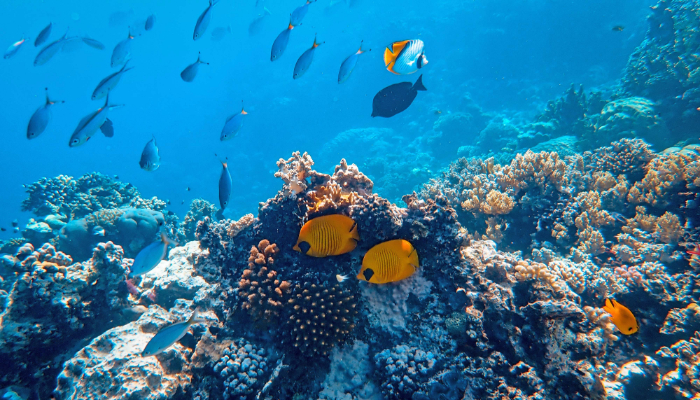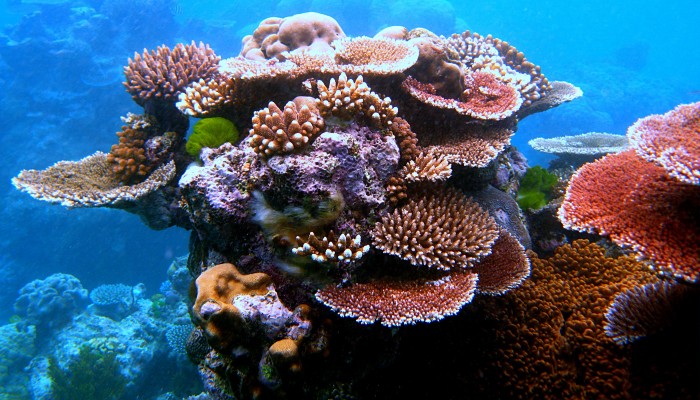Seas
Where can I find information about seas around the world?
(Years 5-8)

Image: Tasman Sea by CIA World Factbook on Wikimedia Commons.
Entry last updated: 10/07/25
Introduction
Seas can be partly enclosed by land or completely enclosed by land. Some seas are part of an ocean like the Tasman Sea in the Pacific Ocean. Some seas are called bays, for example, the Bay of Bengal, and some are called gulfs such as the Gulf of Mexico. Some are lakes, like the Caspian Sea. When a sea is a part of an ocean, the ecosystems are similar, and the conservation issues faced are the same.
This entry will help you find information about the sea, its protection and its importance to Māori.
Well known seas
Here is a list of some seas and where they are located. Try finding them on a map of the world.
Arabian Sea: located northwest of the Indian Ocean. India, Pakistan, Iran, Oman and Somalia are some of the countries that surround it.
Baltic Sea: is part of the North Atlantic Ocean in northern Europe. Finland, Latvia, Lithuania, Poland, Russia, Germany and Denmark are some of the countries that border it.
Bay of Bengal: lies to the north of the Indian Ocean. It is bordered by Sri Lanka, India, Bangladesh, Myanmar and Malaysia.
Caribbean Sea: is part of the North Atlantic Ocean near the Gulf of Mexico. Cuba, Puerto Rico, Guatemala, Nicaragua and Columbia are a few countries that surround it.
Caspian Sea: is actually a lake called an inland sea. Located in Central Asia, it is bordered by Kazakhstan, Turkmenistan, Iran, Azerbaijan, and Russia.
Coral Sea: lies in the South Pacific Ocean, off the northeast coast of Australia.
Dead Sea: is a landlocked salt lake. It is bordered by Israel on the west and Jordan on the east.
Gulf of Mexico: is a bay in the Atlantic Ocean next to Mexico. The United States and Cuba are other countries around it.
Mediterranean Sea: is a sea that joins the Atlantic Ocean. It separates Europe from Africa. Algeria, Libya, Egypt, Syria, Greece, Italy, France and Spain are some of the countries on its border.
Red Sea: is a narrow inlet of water that connects the Indian Ocean to the Mediterranean Sea through the Suez Canal. Yemen, Saudi Arabia, Egypt, Sudan and Somalia are countries that border this sea.
Tasman Sea (Te Tai o Rēhua): part of the Pacific Ocean. It is found between New Zealand and Australia.
Tips: Use the names of these lakes as search words or keywords to find out more about them. Search words, or keywords, are the most important words in your question. You can leave out small words like ‘the’ and ‘of’ and just choose the main ones, eg Red Sea. We can always change our keywords or add more if we need to.
Seas of the world
Use the websites below to find articles, images, videos and quick facts about the sea.
Britannica School is part of EPIC which is a collection of reliable databases covering lots of different topics. It’s put together for New Zealand school students and helps to answer questions like this.
Choose Middle to begin with.
Enter 'seas' as a search word or any of the names of seas listed above.
Select a sea to find out about eg Red Sea.
Remember, you can change your level at any time.
Tips: To use the EPIC resources, you need a password from your school librarian. Or chat with one of our AnyQuestions librarians to help you online. Some EPIC databases may also be available through your public library.
This is another EPIC database. You will find information aimed at primary school on a range of subjects such as art, science, social studies, literature, sports, technology and more.
Go to Geography to find Oceans and Seas.
You will find links to information about seas such as the Adriatic Sea, Black Sea, and North Sea.
The information includes quick facts, articles, news, and images.
You can also use the search box to enter the name of a sea you want to know more about.
The National Geographic Society website inspires people to care for the planet. It has lots of articles and videos on geography, natural science and archaeology.
Enter the word 'seas' into the search box at the top of the page.
Select to read Sea and World's Seas.
You will find an explanation of the difference between seas and oceans, and types of seas.
Tips: Websites that have .org or .net in the address can have good information, but you need to assess how reliable it is. Check the About us link on the website, if you can find one. That can tell you what the organisation’s mission and values are.
Exploration
These New Zealand and general websites will help you understand marine life and marine environments.
The mission of Young Ocean Explorers is to inspire children to love and appreciate the ocean. Use the videos to explore sea life.
Look down the page to find lots of articles, videos and more.
Watch the video Seabirds and whales! or Meet the largest dolphin in the sea.
Or go to Hauraki Gulf to learn about the sea life in this area.
Tips: Websites that have .com or .co in the address can have good information, but you need to assess how reliable it is. Check the About us link on the website, if you can find one. That can tell you what the company’s mission and values are.
Te Ara: The Encyclopedia of New Zealand
Te Ara is an excellent starting point for all questions about Aotearoa New Zealand. If we look down to the bottom of the page, we can see that the website belongs to the Ministry for Culture & Heritage, so the information is well-researched and reliable.
Go to the Sitemap and look for the Section: Earth, Sea and Sky.
Explore each of the stories on Birds of the Sea and Shore, Sea Life and Marine Environments to find out about sea birds and sea creatures, and the sea floor surrounding Aotearoa.
Use this page to read about conservation and harvesting the sea too.
Ocean exploration is part of the National Oceanic and Atmospheric Administration (NOAA) in America. Most of their work is around climate monitoring, and ocean and coastal management. Their website has lots of videos and educational resources to explore.
The tab Multimedia has a Video Gallery of past expeditions.
Go to the Arctic, then watch a video of a Glass squid.
The tab Education has a link to Ocean Facts.
Select Marine Life to read about the seaweed sargassum.
Tips: A website’s address (URL) can give you a hint about how reliable it is. Look for addresses in the results that include .gov or .edu in the URL. These are quality sites from overseas government or educational organisations.
Conservation
The websites listed will help you understand threats to marine life and the efforts to preserve and protect our marine life and environments.
Department of Conservation (DOC)
The Department of Conservation (DOC) is a New Zealand government website about preserving the natural and historical places of New Zealand. You can see it’s a government site by looking at the About us link at the top of the page.
Select the tab Nature to find Habitat from the dropdown menu.
Then look down the page to find Marine and Marine reserves A-Z.
These sections have information on the conservation efforts for seas and shore birds, marine mammals, and marine reserves around the coast of Aotearoa.
Tips: We like sites like this because they’re reliable. You can tell because of their web address – they have either .govt or .ac, meaning they are from government or educational organisations. They’re also New Zealand sites, so relevant for us.
Part of the Smithsonian Institution’s Ocean Initiative, this website has information about marine life and why it needs to be protected.
Find the tab on Conservation then read up on threats to sea life such as fishing, oil spills, acidification, climate change and pollution.
Also, read conservation articles on sustainable fishing and the protection of endangered sea turtles.
Significance to Māori
Moana (sea or ocean) is hugely important to Māori as a source of food and travel. The websites below will guide you to the history of Māori and the sea.
Te Ara: The Encyclopedia of New Zealand
Te Ara has information on the importance of moana to Māori.
Enter the words 'Māori sea' into the search box.
Read the story Māori and the sea and Tangaroa — the sea.
These stories are about the spiritual importance of the sea to Māori.
LEARNZ is a programme of virtual field trips to places around Aotearoa New Zealand.
Find the field trip called Sustainable Seas.
Read the story Kaitiakitanga o te Moana.
The story is about Te Ika Nui a Māui, Tangaroa (Māori god of the sea), and the sea as a taonga (treasure).
Tips: Some websites have .au, .nz, .uk or other codes in their url. This can tell you which country this website comes from eg .au is from Australia or .nz is from New Zealand. You can check the About Us link on the website for more information.
Books
Your school library or local library is the best place to look for books about the sea. Remember to also look at books about the oceans to find information about the sea. Below is a list of books to help you begin your search.
Seas, gulfs and bays by Anita Ganeri
I'm glad there are oceans and seas by Tracey Turner
A coral reef story: animal life in tropical seas by Jane Burnard
Rising seas by Raymond Bergin
Save the seas by Liz Gogerly.
SCIS no: 5474963
Topics covered
Related content

Oceans
Where can I find information about oceans?

Seasons
Where can I find information about the seasons?

Rivers (New Zealand)
Where can I find information about rivers in New Zealand?

Great Barrier Reef
Where can I find information about the Great Barrier Reef?
